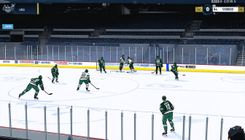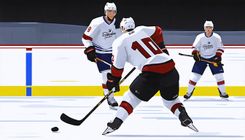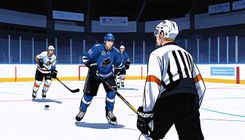NHL CBA Update: New Development Path for Prospects

The current NHL collective bargaining agreement (CBA) is set to expire in September 2026, a date that may evoke concern among those familiar with the sport's labor history. Recently, however, the league's owners and the NHL Players Association reached an initial agreement on a new framework. Although the full Memorandum of Understanding has not yet been released to the public, NHL insider Frank Seravalli has revealed a noteworthy change: Under the new CBA, each NHL team will have the option to assign one 19-year-old prospect to their American Hockey League (AHL) affiliate each season. This change has the potential to significantly reshape the development landscape for NHL prospects, affecting up to 32 players annually.
Historically, the agreement between the Canadian Hockey League (CHL) and NHL has limited players drafted from major junior leagues such as the Ontario Hockey League (OHL), Western Hockey League (WHL), and Quebec Major Junior Hockey League (QMJHL) from being assigned to the AHL or ECHL until they turn 20 or complete four seasons in the CHL. Notably, players drafted from other junior leagues who later joined CHL teams are exempt from this stipulation. As the new CBA will not be implemented until the 2026-2027 season, the first players likely to be impacted are those born in 2007. For instance, Vancouver Canucks prospect Braeden Cootes will turn 19 in February 2026 and could potentially be assigned to the Abbotsford Canucks that fall, should management decide a junior league setting is no longer ideal for his development.
The age-based nature of the new rule, rather than being tied to draft year, allows freshly drafted CHL players who turn 19 shortly after being drafted to bypass returning to the junior league entirely. For example, top prospect Ryan Roobroeck, born in September 2007, could sign his entry-level contract (ELC) immediately after the draft and, if he remains with his NHL team's development camp long enough, may be assigned directly to the AHL instead of returning to the Niagara IceDogs of the OHL. This significant shift offers CHL-affiliated prospects an additional development pathway, which has been long overdue. Transitioning from junior hockey to professional leagues has proven challenging for many players such as Dylan Strome, who faced difficulties early in his career because he was too advanced for the OHL, yet not quite ready for the NHL. The new development path could have expedited his transition to the NHL, mitigating the ongoing narrative of him being labeled a bust. Instances in recent years, such as Cole Perfetti's experience with the Manitoba Moose when the pandemic disrupted his major-junior season, and Shane Wright's exception to play with the AHL's Coachella Valley Firebirds in 2023, support the need for more flexible development options. As prospects now have the ability to gain professional experience a year earlier, they can confront their weaknesses and leverage their strengths, avoiding being sidelined in the NHL or dominating junior leagues without further growth opportunities.









